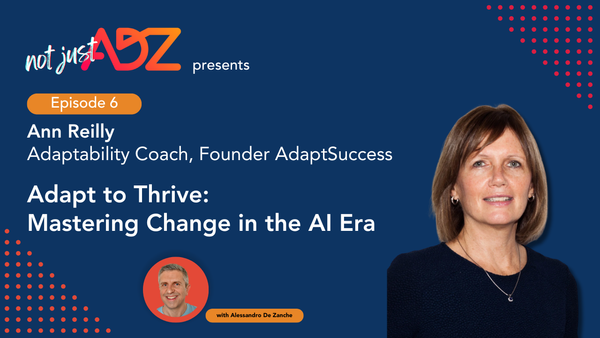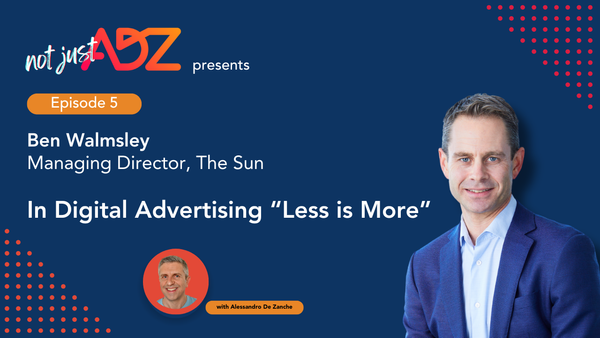What The ISBA Report Is Really Telling Us | AdExchanger
The advertiser-funded Programmatic Supply Chain Transparency Study by the Incorporated Society of British Advertisers (ISBA) triggers a…

The advertiser-funded Programmatic Supply Chain Transparency Study by the Incorporated Society of British Advertisers (ISBA) triggers a feeling of déjà vu.
The report found that publishers receive an average of 51% of advertiser spend, while 15% of advertiser spend — representing around one-third of supply chain costs — “could not be attributed.”
This is a best-case scenario, with top advertisers and premium media owners involved, which leaves little to the imagination of what a nonpremium scenario might look like.
A split reaction
The report split the industry into different groups with varied and sometimes polarized opinions. Some claimed that once again ad tech and the programmatic open marketplace showed their darker side, while others broadened the background to look at other industries with similar dynamics and, last but not least, some relentlessly defended the category and open marketplace.
I can’t help but feeling trapped in a 13-year Groundhog Day loop. It’s an identical pattern: An investigation or report shows a lack of transparency in the programmatic open marketplace, leading people to discuss, argue and conclude that the industry must mature and become more transparent … until the next report.
The real issue is that very few mention how the more media owners rely on the programmatic open marketplace, the deeper they are in crisis. And it’s more of a foundational issue than a transparency one.
This is increasingly evident at a time when subscription figures, audiences and traffic are growing, showing how the focus on marketing and editorial is bringing media owners back onto the right path — despite road bumps along the way — with the diversification of their monetization strategies, better user experiences and stronger engagement with their audiences while reclaiming their informative and educational role in society.
The programmatic open marketplace has clearly, consistently and repeatedly failed to support premium media owners. Instead, ad tech and the long tail have benefited most from the presence of quality publishers in the ecosystem.
Media owners’ devalued role
Another aspect that few acknowledge is that the debate about the programmatic open marketplace and ISBA report assumes the passive involvement of quality media owners, as if they were furniture in the background. Worse, they have often been relegated to ad slot provider for the benefit of a “greater good,” which in more than 13 years of programmatic open marketplace has never clearly materialized for media owners.
Advertisers deserve a truly high-quality advertising ecosystem, but it must be balanced and it needs quality media. If the latter cannot survive, the quality goes with it, bringing down the whole ecosystem.
That’s a matter of financials and mathematics way before transparency.
Conflicting interests and outcomes
Quality media properties cost money to run and cannot survive on the programmatic open marketplace as it is. And, by the way, even if they could survive, why should they generate only a fraction of the revenue they deserve?
Some might object that I am ignoring the value in ad tech and its contribution in the ecosystem. In fact, I think that the role of ad tech here should be that of enabler, managed — if not owned — by those providing the audience, content, context, experience, inventory, user consent and most of the data.
While many media owners furlough or fire staff despite strong audience metrics during the pandemic, the industry is busy splitting hairs over a report but missing the bigger picture: The programmatic open marketplace has fallen short in supporting quality media and, vice versa, quality media has overvalued it.
I already know there will be two main reactions to that statement: Some will chalk it up to “the usual contrarian” view, while some (the real contrarians) will gloat that “display advertising is dead.” But in reality it’s love for digital advertising that makes me think that a better setup is not only needed and possible, but it could also support media owners, advertisers and audiences much better than the current one. And let’s not forget that I am pointing the finger at the open marketplace, not at programmatic as a whole.
A possible solution
There isn’t capacity to sustain more than a few media owners behind paywalls in any given country, but the degree of success will be determined first and foremost by the uniqueness of the content and proposition. For news media specifically, as I cynically keep thinking, a few thriving independent and self-sustaining publishers are much better than the whole category struggling to keep their heads above water and resorting to average content, bad user experience and even lack of privacy compliance to make ends meet.
I have advocated for media owners’ alliances in the past (in 2018 and 2019), but one of the main objections has always been the difficulty in bringing together competitors. I disagree since the real competition comes from outside the category: the big walled gardens that, in the absence of a strong alternative, are eating most of advertisers’ budgets. (In my opinion, walled gardens complement a quality media offering as part of a branding strategy.)
New tools and decentralized approaches to data are going mainstream, ensuring security, privacy and the capability to build identity and enrich each other’s data without materially sharing it. They create additional reasons why media owners should work together and power their alliances without raising the old, myopic objections.
The new world could see media owners having two main approaches to monetization. The core product would be media, strictly independent and individual, with a focus on subscriptions and content. The additional supporting channel — advertising — is where the alliance with other media owners would be built with common standards and data, creating a quality advertising ecosystem that is managed and monetized by a separate entity owned by and representing the participant media owners. The benefits for advertisers, which should have a proactive role in such a quality environment, would be huge on many fronts.
The role of the ISBA report in all of this is to confirm the problems of the programmatic open marketplace, but it shouldn’t distract us from the bigger picture: the need for a balanced, high-quality advertising ecosystem built on the three pillars of the audience, advertiser and a self-sustaining media owner.
Originally published at https://www.adexchanger.com on May 15, 2020.





